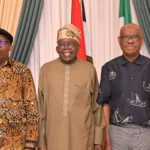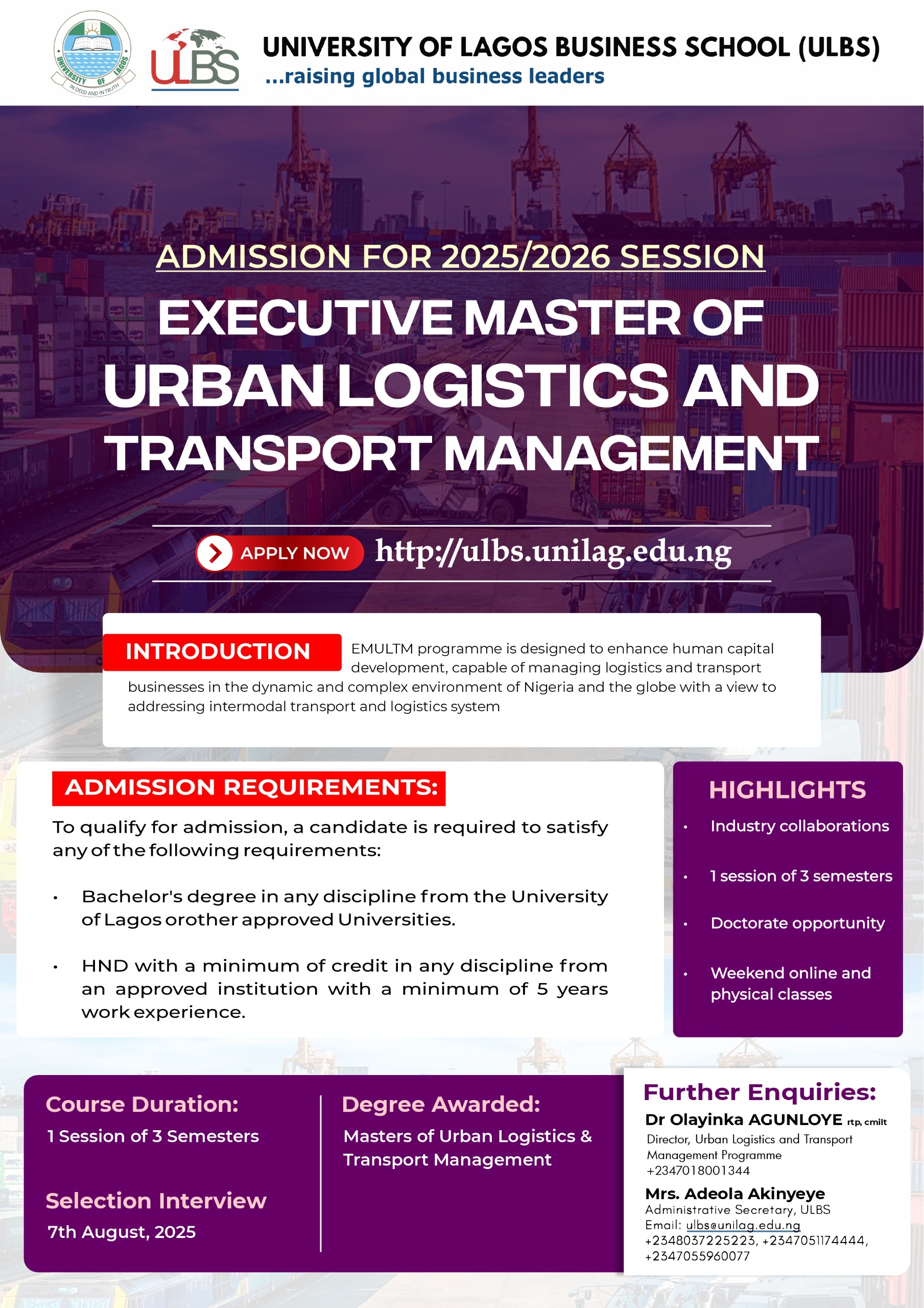Ayo Oyoze Baje
“While growing up, I admired professionals who merged creativity with leadership, figures like Lee Kwan Yu for his foresight and discipline, Frank Lloyd Wright for blending culture with construction”, Samson Akinsosoye
One of the most interesting aspects of the practice of journalism is the opportunity one has to network with people of diverse professional pedigrees. And through such interactions, one gets to know about some rare gems and multi-talented individuals who are adding immense value to their immediate and broader communities, but they are hardly known by the larger public. While some are media-shy, others keep to themselves, all because of the fear of touching the tiger’s tail by speaking the bitter Truth to political power. That is worse still, in an environment peopled by a crop of self-righteous, chest-beating political helmsmen who must never be criticised. Yet, it should not be so. In fact, that is because the society is at the receiving end, wallowing not only in self-deceit but gross ignorance.
As an unrelenting advocate of the crying need for Nigeria to make the best use of her best brains, in and outside our shores, it became compelling to engage the multi-talented genius, Architect Samson Akinyosoye, an IT professional and Management Consultant, after listening to him deliver a lecture on the need for the right deployment of Artificial Intelligence, AI in Nigeria. He did so to members of
the Artificial Intelligence Management and Finance Institute (AIMFIN, Nigeria) at Ikeja Airport Hotel in early August 2025. In fact, that unforgettable lecture was so brilliant, insightful and thought-provoking that one had to seek his permission for the media interaction.
So, the questions have to do with knowing more about his person, his vision, his desire to ply his trade in various fields, what architecture and artificial intelligence mean to him and of course, his piece of advice to those who pilot our affairs and the younger generation of Nigerians. Perhaps it is good enough from the horse’s mouth.
“I hold both first and second degrees in Architecture from the prestigious Obafemi Awolowo University, Ile Ife and have pursued executive development in business strategy and digital innovation. My core experience cuts across design thinking, enterprise development, urban planning, construction, banking, cybersecurity, artificial intelligence and digital transformation.
” I once served as the General Secretary of the Nigerian Institute of Architects (NIA), Lagos Chapter, and currently lead multidisciplinary teams through my consulting and architecture firms in Lagos. By God’s divine grace, I am also a clergyman in the Anglican Church.” Intriguing, is this not? Of course, it is. But there is more to read through, digest, assimilate and ingest from the professional table of Akinyosoye.
On his vision for success in life, while growing up, and who his heroes were, he has this to say: “Growing up, I had a vision to design machines and tools that uplift people, socially, economically, and psychologically. My interest as a child was first about robotics and computing, but as I grew further, I took an interest in structure and order, which led me to architecture. I admired professionals who merged creativity with leadership, figures like Lee Kwan Yu for his foresight and discipline, Frank Lloyd Wright for blending culture with construction, John Maxwell for his leadership acumen and Phillip Kotler for organising businesses.” It is little of a surprise, therefore, that with the powers of passion, creative ingenuity and focus, he has diligently pursued his vision to get him to where he finds himself as of this day.
From his wealth of experience, he hits the nail right on its head: ” Architecture taught me precision, patience, creativity and problem-solving. It gave me a mindset of systems thinking, understanding how form, function, and context interact.
“Through architecture, I’ve been privileged to shape communities, advise on urban policy, and mentor the next generation of professionals. The discipline also exposed me to interdisciplinary thinking, where creativity meets economics, law, and even governance. Architecture gave me the foundation for all I do today.” This is simply full of inspiration.
Furthermore, the next question has to do with what he thinks about the challenges facing the practice of architecture in Nigeria and how they should be resolved. In his views: “
The practice of architecture in Nigeria faces several deep-rooted challenges. Our regulatory processes are slow and discouraging, often putting quality professionals at a disadvantage. There’s a widespread misconception of what architects do, reducing the role to just technical drafting rather than the multidimensional expertise we bring. Collaboration is another weak spot; various professionals in the built environment often operate in silos.
“On top of that, technology adoption, particularly in digital design and project modelling, remains far behind global standards. To address these, we need systemic reforms, especially simplifying the permitting process, enforcing professional boundaries through NIA advocacy, and building incentives for interdisciplinary collaboration. Tools like Building Information Modelling (BIM) should also be mainstreamed in public and private projects.” One does pray that our policy makers in this critical sector are out there listening to these words of admonition.
But given his diversification into other fields, including digital innovation, it is necessary to know what AI means to him and how best it should be deployed in architecture. His response is, as usual, another food for thought: “Artificial Intelligence, to me, is a force multiplier. It doesn’t replace human creativity; it enhances it. In architecture, AI helps streamline repetitive tasks, model environmental impacts, and generate multiple design iterations rapidly. This efficiency not only saves time but also allows us to explore solutions that would otherwise be impractical within traditional timelines.
“However, successful deployment depends on intentionality. AI should be integrated into architectural workflows, not just as a novelty, but as a core strategic tool for innovation, sustainability, and performance.” A must, one would add.
But what are the negative sides of AI, especially about its misuse by students? That has remained the concern of seasoned educationists. To provide the needed illumination, he says that: “As with most things better, there will always be odd sides and AI is not an exception, especially in academia. The misuse of AI tools by students is becoming increasingly common. Many rely on AI to generate entire design proposals without understanding the rationale or context behind them. This undermines critical thinking and originality. Plagiarism, shallow learning, and overconfidence in machine output are creeping into the academic process. To curb this, we need to embed AI literacy into the curriculum, teaching students not just how to use AI, but when and why it should be applied. We must treat AI as a tool, not a shortcut.” Brilliant submission, you would admit.
But how best should AI be deployed in the battle against poverty to achieve good governance? To this question, he provides the way forward: “Quite frankly, AI has significant potential in fighting poverty and improving governance. By leveraging data analytics, governments can design more targeted social programs, track resource allocation more accurately, and respond faster to economic shocks. In agriculture, AI can help rural farmers predict weather patterns and optimise crop yields. In education, it can personalise learning for disadvantaged communities. The key is purposeful deployment, aligning AI with policy objectives that prioritise human development and inclusivity.” Given our current sordid state of the widening gap between what God has blessed Nigeria with and our parlous human development index, all these have become a necessity.
That brings us to the question of what role the government should play in the management of AI. On this, he states that: “Our government has a critical role to play. Regulation is essential, particularly in areas like data privacy, surveillance, and algorithmic fairness. At the same time, the government should invest in local innovation, supporting research labs, incubators, and partnerships that nurture homegrown AI solutions.
” Capacity-building for public officials is also non-negotiable; decision-makers must understand how to engage with these technologies responsibly and effectively. A few of the organisations I belong to are already advising the government on how to go about this.” That is good to note.
As for the other areas of our national life where AI can be beneficial, he offers valuable insights. “AI can add real value across multiple sectors. In healthcare, it can assist with diagnostics and patient tracking. In transportation, it can optimise routes and reduce congestion. Security operations can benefit from AI-based analytics, though always with respect for civil rights. Even the judiciary can use AI to streamline administrative processes and analyse precedent data for better decision-making. We have witnessed wide adoptions across telecoms, banking and fintech, but we can have more, especially in manufacturing, learning, security, commerce and much more.” That is the best way forward.
On his piece of candid advice to the current administration, particularly on the economic hardship, he says that: “When it comes to Nigeria’s current economic hardship, I believe we must return to the fundamentals. Monetary policy must be stable and predictable to encourage investment. States should be empowered to drive development based on their unique capacities. Micro, small, and medium-sized enterprises (MSMEs) need real access to capital and infrastructure.
“We must also prioritise self-reliance in food production and energy; this is the only way to build resilience in the face of global shocks.”
On how he relaxes, he explains that: “I find joy in the simple things. I enjoy reading, particularly biographies and strategic essays. Sometimes I take walks through job sites or unfinished buildings; the rawness of those spaces inspires fresh thinking. Sketching ideas, even ones that may never get built, also helps me clear my head. It’s my way of staying grounded while still envisioning what’s possible.
“One more thing, I like mentoring people, and I can spend several hours teaching and speaking to the younger generation of Nigerians.”
One hopes and fervently so that our policy makers would give him a listening ear and, more importantly, take the necessary actions right away.








